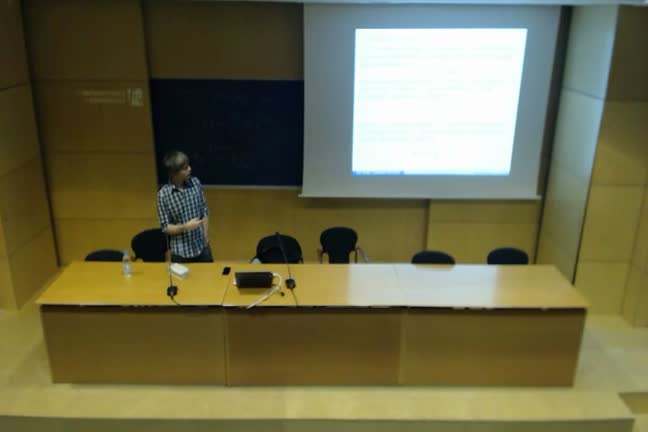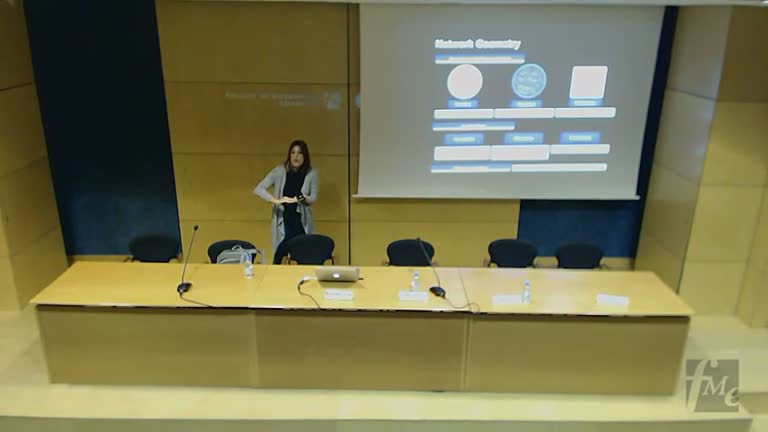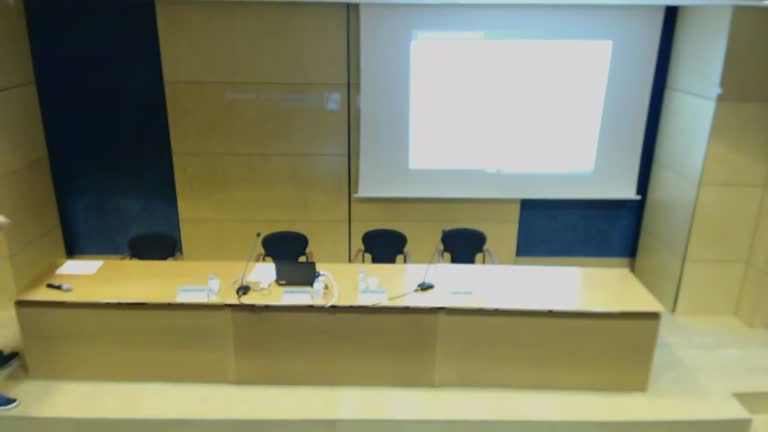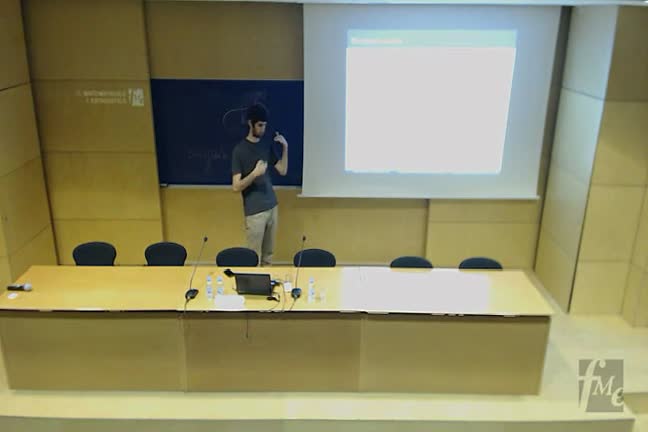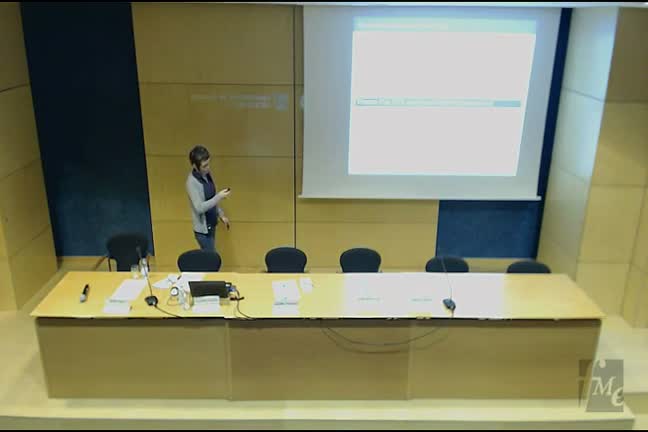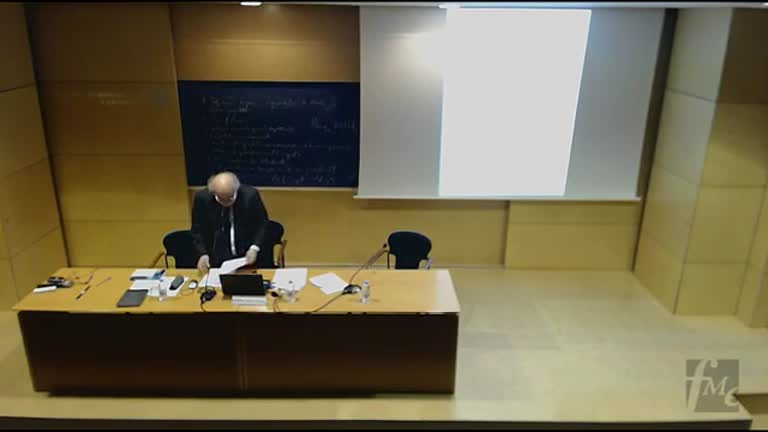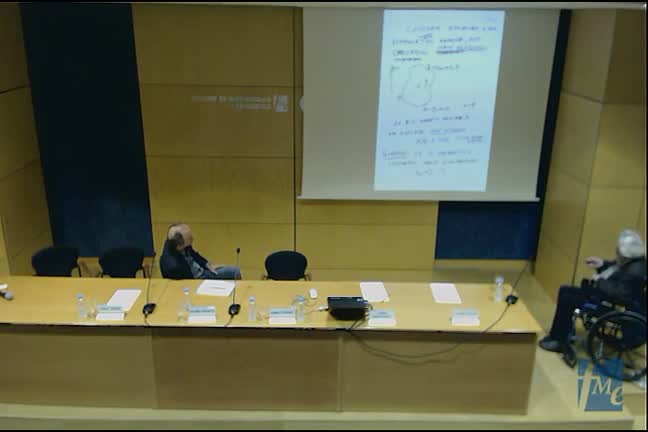Xavier Ros-Oton, ex-estudiant de la FME i doctor en Matemàtiques per la UPC (2014, premi Extraordinari de Doctorat), ha treballat a la University of Texas at Austin (USA, 2014-17), i actualment a la Universität Zürich (Suïssa). Com a investigador, treballa principalment en el camp de les Equacions en Derivades Parcials (EDP).
L’any 2017 rebé el premi J. L. Rubio de Francia de la Real Sociedad Matemàtica Española (RSME), un dels premis més importants en matemàtiques a l’Estat espanyol. També el 2017, fou guardonat amb el premi Antonio Valle de la Sociedad Española de Matemática Aplicada (SeMA). Amb 29 anys, es convertí en el guanyador més jove d’aquest premi i en la primera persona a guanyar-los tots dos el mateix any.
Free boundary problems are those described by PDE's that exhibit a priori unknown (free) interfaces or boundaries. In other words, there are two unknowns in these problems: the solution of a PDE, and a free boundary which determines the domain in which the PDE is satisfied. Such type of problems appear in Physics, Probability, Biology, Finance, or Industry, and the study of solutions and free boundaries uses methods from PDE's, Calculus of Variations, and Geometric Measure Theory. The main mathematical challenge is understanding the regularity of free boundaries.
The obstacle problem is the most classical and motivating example in the study of free boundary problems. A milestone in this context is a classical paper of L. Caffarelli (Acta Math. 1977), in which he established for the first time the regularity of free boundaries in the obstacle problem. This is one of the main results for which he got the Wolf Prize in 2012.
The goal of this talk is to present and motivate different free boundary problems, explain the main known results in this context, and give an overview of the current research and open problems.
Vídeos de la mateixa sèrie
Bernouilli numbers, Eisenstein series and cyclotomic units
explain a deep Theorem of Mazur and Wiles (proving a conjecture of Iwasawa) that gives a formula
for the cardinality of the p-part of the class groups of cyclotomic fields in terms of Bernouilli numbers.
"The project leading to this talk has received funding from the European Research Council (ERC)(obriu en una finestra nova) under the European Union’s Horizon 2020 research and innovation programme (grant agreement No 682152): Euler systems and the conjectures of Birch and Swinnerton-Dyer and Block-Kato"
Network geometry
Networks are critical to understand human nature ---from genome to brain and society--- and our environment ---the Internet, food webs, international trade... ---, and are changing the way in which we model and predict complex systems in many different disciplines. Surprisingly, all complex networks talk a common language, regardless of their origin, and are imprinted with universal features. They are small-world, strongly clustered and hierarchical, modular, robust yet fragile, and may exhibit unexpected responses like cascades and other critical and extreme events.
Many of these fundamental properties are well explained by a family of hidden metric space network models that led to the discovery that the latent geometry of many real networks is hyperbolic. Hyperbolicity emerges as a result of the combination of popularity and similarity dimensions into an effective distance between nodes, such that more popular and similar nodes have more chance to interact. The geometric approach permits the production of truly cartographic maps of real networks that are not only visually appealing, but enable applications like efficient navigation and the detection of communities of similar nodes. Recently, it has also enabled the introduction of a geometric renormalization group that unravels the multiple length scales coexisting in complex networks, strongly intertwined due to their small world property.
Interestingly, real-world scale-free networks are self-similar when observed at the different resolutions unfolded by geometric renormalization, a property that might find its origin in an evolutionary drive. Practical applications of the geometric renormalization group for networks include high-fidelity downscaled network replicas, a multiscale navigation protocol in hyperbolic space that takes advantage of the increased navigation efficiency at higher scales, and many others.
The level set method for motion by mean curvature
In the early stage of his career, Colding did impressive work on manifolds with bounds on Ricci curvature. In 1998, he gave an invited address to the ICM in Berlin. He began coauthoring with William P. Minicozzi at this time: first on harmonic functions and later on minimal surfaces. In 2010 Tobias H. Colding received the Oswald Veblen Prize in Geometry together with William Minicozzi II for their profound work on minimal surfaces.
Since 2008 he has been a Fellow of the American Academy of Arts and Sciences, and since 2006 a foreign member of the Royal Danish Academy of Sciences and Letters, and also since 2006 an honorary professor of University of Copenhagen, Denmark.
Many physical phenomema lead to tracking moving fronts whose speed depends on the curvature. The "level set method" has been tremendously succesful for this, but the solutions are typically only continuous. We will discuss results that show that the level set flow has twice differentiable solutions. This is optimal. These analytical questions crucially rely on understanding the underlying geometry. The proofs draws inspiration from real algebraic geometry and the theory of analytical functions.
Regularity of free boundaries in obstacle problems
L’any 2017 rebé el premi J. L. Rubio de Francia de la Real Sociedad Matemàtica Española (RSME), un dels premis més importants en matemàtiques a l’Estat espanyol. També el 2017, fou guardonat amb el premi Antonio Valle de la Sociedad Española de Matemática Aplicada (SeMA). Amb 29 anys, es convertí en el guanyador més jove d’aquest premi i en la primera persona a guanyar-los tots dos el mateix any.
Free boundary problems are those described by PDE's that exhibit a priori unknown (free) interfaces or boundaries. In other words, there are two unknowns in these problems: the solution of a PDE, and a free boundary which determines the domain in which the PDE is satisfied. Such type of problems appear in Physics, Probability, Biology, Finance, or Industry, and the study of solutions and free boundaries uses methods from PDE's, Calculus of Variations, and Geometric Measure Theory. The main mathematical challenge is understanding the regularity of free boundaries.
The obstacle problem is the most classical and motivating example in the study of free boundary problems. A milestone in this context is a classical paper of L. Caffarelli (Acta Math. 1977), in which he established for the first time the regularity of free boundaries in the obstacle problem. This is one of the main results for which he got the Wolf Prize in 2012.
The goal of this talk is to present and motivate different free boundary problems, explain the main known results in this context, and give an overview of the current research and open problems.
Hyper-Kähler geometry
La professora Voisin ha rebut múltiples reconeixements per les seves contribucions a la geometria algebraica, incloent ser conferenciant convidada a l'ICM de Zürich l'any 1994 (Secció Geometria Algebraica) i conferenciant plenària a l'ICM de Hyderabad (2014). Ha rebut les medalles de bronze, plata i or del CNRS (l'última d'elles l'any 2016), el premi Heinz Hopf, el premi Clay en recerca matemàtica i més recentment, el 2017, el premi Shaw, denominat com els "Nobel asiàtics", compartit amb el matemàtic János Kollár.
Kähler geometry is a natural extension of complex projective geometry where the tools of Hodge theory are still available and allow to study the link between topology and complex geometry.
The simplest examples of projective complex manifolds deforming to non-projective ones are the abelian varieties (complex tori) of dimension at least 2. The subject of the lecture will be hyper-Kähler (or quaternionic) manifolds, which also share this property. This geometry was discovered by Beauville on the basis of Yau's fundamental work on existence of Kähler-Einstein metrics. Although this geometry may seem extremely restricted, there are many (families of) examples, all built via algebraic geometry.
Si és convexa ha de ser simple
The maximum principle, moving planes et al.
És la segona vegada que un premi Abel (guardó considerat com el Nobel de Matemàtiques) visita l'FME. L'anterior fou Michael Attiyah, que ens va visitar l'any 2008. El professor Nirenberg impartirà una conferència que portarà per títol ‘The maximum principle, moving planes et al’. Aquesta activitat s’emmarca dins del cicle Col•loqui FME-UPC, una trobada de periodicitat quatrimestral al voltant d'un investigador de reconegut prestigi internacional. El Col•loqui FME - UPC és una iniciativa conjunta de la Facultat de Matemàtiques i Estadística, el Departament de Matemàtiques, el Departament d'Estadística i Investigació Operativa i el Departament d'Enginyeria Civil i Ambiental.


